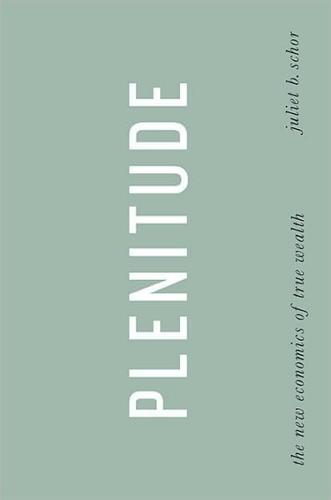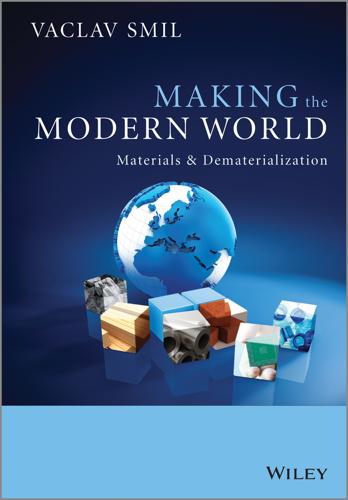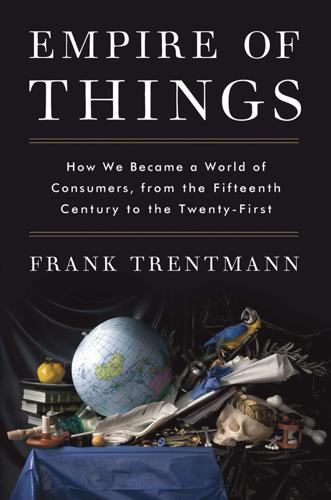material flow analysis
description: analytical method to quantify flows and stocks of materials or substances in a well-defined system
4 results

Plenitude: The New Economics of True Wealth
by
Juliet B. Schor
Published 12 May 2010
The extraction and transformation of resources like fuels, wood, sand, gravel, minerals, and biomass create the pulse of an economy. Until recently, scholars paid relatively little attention to how these materials move through and across economies. But that is changing. One of the most interesting metrics is called material flow analysis. MFA tracks the extraction of resources through production and consumption. The field is still in its infancy, and not well known in the United States, but it is growing, especially in Europe. FIGURE 2.7 Worldwide Materials Extraction, 1980-2005 Source: Sustainable Europe Research Institute (2009) We now have the first comprehensive global estimates of material flows over time.
…
Linux Lipovetsky, Gilles Little House on a Small Planet (Salomon) Living Planet Index living wall systems Lomborg, Bjoooorn Lovins, Amory McDonough, William McKinsey studies macroeconomics Maker Faire Malaysia, health care in Malthus, Thomas manufacturing environmental impact of financialization and network model of productivity growth and putting-out systems of scale and efficiency of marketing Marks and Spencer Massachusetts Executive Office of Energy Massachusetts Institute of Technology (MIT) mass extinctions material flow analysis materiality paradox Meadows, Dennis Meadows, Donella “Dana,” meat methane Mexico, ecological footprint in Michigan, University of microcombines microfarming microgeneration money discount rate and- Mozilla multifunctionality nanotechnology Narain, Sunita National Aeronautics and Space Administration (NASA) National Association of Professional Organizers National Science Foundation natural asset restoration natural gas neocommercialization Neo-Malthusians Netherlands: hours worked in productivity growth in New Economics Foundation New Work movement New York Times New York University nitrogen cycle nitrogen oxides nitrogen trifluoride nonprofit organizations nonrenewable resources Nordhaus, William North America: hours worked in materials consumption in population of Norway, ecological footprint in Not So Big House, The (Susanka) nuclear energy Obama, Barack H.

Making the Modern World: Materials and Dematerialization
by
Vaclav Smil
Published 16 Dec 2013
Surprisingly, many people never throw the smaller devices (especially computers) away and keep them in basements or storage, too many units are simply thrown into the garbage and end up in landfills, some are stripped of some materials and a substantial share of e-waste is exported to Asia (above all to China and India) for dismantling and recycling, a practice associated with some truly horrid labor conditions (working without any protection while handling toxic substances) and severe environmental problems (acids and heavy metals seeping into soils and entering streams and ponds), particularly in the infamous recycling center in Guiyu, in China's Guangdong province. The uncertain fate of e-discards is illustrated by the fact that, in their material flow analysis of used computers in the USA, Kahhat and Williams (2012) could do no better than to offer rather wide ranges concerning the fate of 40 million used and scrap devices, concluding that 6–29% of them were exported, 17–21% were landfilled, and 20–47% were collected for domestic recycling (but the actual recycling rate was much lower).
…
Jolliet, O., Saade, M., Shaked, S. and Jolliet, A. (2013) Environmental Life Cycle Assessment, Waterstones, London. Jönsson, Å., Tillman, A.M. and Svensson, T. (1997) Life cycle assessment of flooring materials: case study. Building and Environment, 32: 245–255. Kahhat, R. and Williams, E. (2012) Materials flow analysis of e-waste: domestic flows and exports of used computers from the United States. Resources Conservation and Recycling, 67: 67–74. Kalliala, E.M. and Nousiainen, P. (1999) Environmental profile of cotton and polyester-cotton fabrics. AUTEX Research Journal, 1: 8–20. Kamdar, M. (2011) The pleasures of excess.

Empire of Things: How We Became a World of Consumers, From the Fifteenth Century to the Twenty-First
by
Frank Trentmann
Published 1 Dec 2015
To visualize this, Friedrich Schmidt-Bleek of the Wuppertal Institute came up with the image of the ‘ecological rucksack’.105 This is not about the weight of a product itself, nor about the materials used directly, but about the hidden material burden it carries on its shoulder, from the petrol used to ship it to the resources needed to get rid of it. We also want to know how wasteful or efficient societies have been when squeezing value out of matter, that is, the ‘material intensity’, or productivity, of stuff. Material-flow analysis is not perfect. The flow has mainly been measured using national accounts. These include how much material a society imports and exports, but, since they are national, they do not count the hidden resources that are embedded in foreign products before they cross the border. A car made in Britain in a factory fired by British gas adds many more tons to the British account than a car imported from Korea which appears as if by immaculate conception, with the weight of its body only.
…
A study of Swiss households suggests that richer families tend to consume better as well as more, preferring higher-quality goods with relatively lower environmental impact, although, in total, of course, they have more stuff than their poorer neighbours.107 Still, however rough and limited, material-flow analysis does give us at least a sense of the general picture of how much material is needed to prop up our way of life. Humans have interfered with the environment, clearing land and extracting resources for 12,000 years, ever since settlers first started farming in southern China and the Near East; the Chinese mined coal and used it for cooking 3,000 years ago.
…
In the 1970s, campaigners for environmental justice in the United States added ‘Nimby’ to the political vocabulary, drawing attention to how white middle-class neighbourhoods had mobilized around a ‘Not in My Back Yard’ sentiment and then dumped their waste and pollution on to poor and black communities. Material-flow analysis reveals an even more dramatic global version of Nimby-ism. In the 1950s, Europe and the United States, by and large, still lived mainly off their own resources. In the last fifty years, and especially since the 1970s, they have increasingly offloaded the burden of resource extraction to other regions.

Material World: A Substantial Story of Our Past and Future
by
Ed Conway
Published 15 Jun 2023
Between 2004 and 2016 Chilean miners increased annual copper production by 2.6 per cent. Yet the amount of ore they had to dig out of the ground to produce this marginal increase in refined copper rose by 75 per cent. The most staggering thing about this statistic, however, is not just the numbers themselves but the fact that they show up in no environmental accounts or material flow analysis, which count only the refined metal. When it comes to even the United Nations’ measures of how much humans are affecting the planet, this waste rock doesn’t count.21 There’s another pressing reason to start pondering this, because eliminating carbon emissions essentially involves switching a lot of our activities over from fossil fuels to electricity.